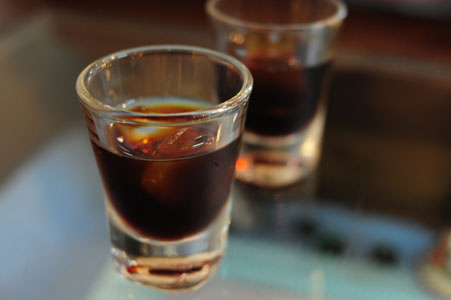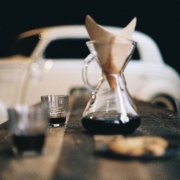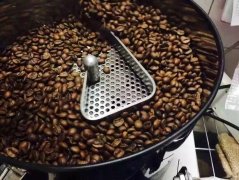The roasting process of coffee fruit after picking.

Roasting is the last and most important step in the processing of coffee beans after being picked. Raw coffee beans cannot be directly used as drinking coffee. All coffee beans must be roasted before grinding and brewing.
Unroasted coffee is often called "raw coffee". Compared with roasted coffee, raw coffee has a shelf life of up to one year. Raw coffee beans are small, dense and so hard that people who are not in the coffee industry may not recognize born coffee beans. Raw coffee has a grass-like taste, which is almost out of touch with the coffee beans we usually imagine in terms of appearance and flavor. It is the roasting process that produces the unique flavor and wonderful aroma of coffee.
Generally speaking, coffee roasting is a "time-temperature" interdependent process, in which physical changes and chemical reactions occur in raw coffee. In the initial stage of baking, the raw beans gradually turn yellow and the water is gradually discharged. When the temperature rises to a certain threshold, the coffee beans burst for the first time and the size of the coffee beans becomes larger. In the second stage of baking, with the rising temperature of beans, a series of complex chemical transformations begin to appear, and the size of coffee beans continues to increase and the color becomes darker. As the temperature continues to rise, aromatic oils form on the bean surface, resulting in a second burst. Many of the ingredients extracted from brewing coffee do not exist in raw coffee at all, but are produced during coffee roasting.
Finally, it is decided when to end the baking: the coffee beans go from the baking bin to the cooling chamber to cool, allowing the coffee beans to stop the chemical reaction.
Important Notice :
前街咖啡 FrontStreet Coffee has moved to new addredd:
FrontStreet Coffee Address: 315,Donghua East Road,GuangZhou
Tel:020 38364473
- Prev

How to bake your own coffee beans at home
Some coffee lovers like to buy raw coffee beans and bake them by themselves. Self-baking is not only easy, but also effective, so anyone who is interested can try it. Not only can you bake as much as you need, but the most interesting thing is that each time you bake, you are facing the coffee beans, and observe the coffee beans in the roaster closely through the smell, color, dandruff, smoke and sonic explosion.
- Next

The baking principles you need to know when drinking coffee
Coffee beans, originally the seeds of coffee trees, are the so-called raw coffee beans after ripening and turning red, drying or washing, and removing the mucous membrane on the skin, pulp and seed surface. The quality of coffee raw beans almost determines whether a cup of coffee is good or not. At a time when coffee is becoming more and more high-quality, the requirements of raw beans are becoming more and more exquisite.
Related
- Beginners will see the "Coffee pull flower" guide!
- What is the difference between ice blog purified milk and ordinary milk coffee?
- Why is the Philippines the largest producer of crops in Liberia?
- For coffee extraction, should the fine powder be retained?
- How does extracted espresso fill pressed powder? How much strength does it take to press the powder?
- How to make jasmine cold extract coffee? Is the jasmine + latte good?
- Will this little toy really make the coffee taste better? How does Lily Drip affect coffee extraction?
- Will the action of slapping the filter cup also affect coffee extraction?
- What's the difference between powder-to-water ratio and powder-to-liquid ratio?
- What is the Ethiopian local species? What does it have to do with Heirloom native species?

